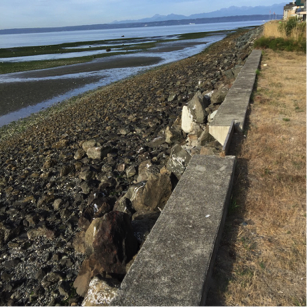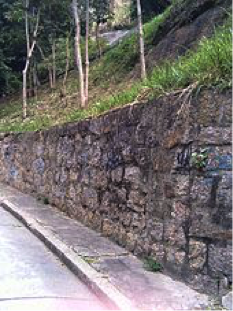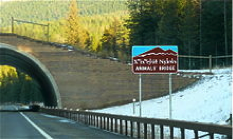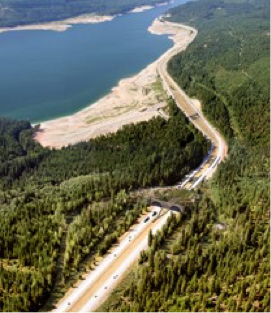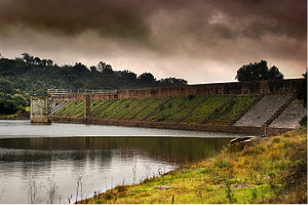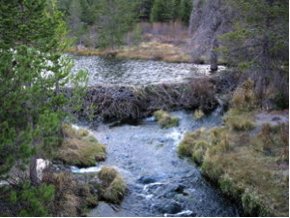The Ecological Impact of Walls
Retaining walls, large and small, are common in home yards, beaches, and many other locations. The basements of our homes are a form of retaining wall used to control the soil surrounding the basement. Seawalls are designed to protect the human inhabitants from the energy of the sea. They impede the natural flow of sand, soil and wildlife from the area restricted by the wall. On a recent vacation the effect of the retaining walls or seawalls, made of concrete and stone, was easy to see when compared to a nearby area without the walls. The beach area with the walls was rocky and presented an uninviting entryway; the beach without the retaining walls was sandy and inviting, with birds and other wildlife darting in and out of uprooted trees that were either carried there by the tide or came from the bank.
Roads can also act as walls and have a range of environmental effects including habitat destruction or fragmentation, changes to wildlife movement, wildlife mortality, water and air pollution, noise, and on a broader scale, climate change. To mitigate the impacts of roads as walls, bridges are built over the roads or tunnels underneath the roads to allow and encourage wildlife to cross.
References
- Seawall – Wikipedia - https://en.wikipedia.org/wiki/Seawall
- Retaining Walls – Wikipedia - https://en.wikipedia.org/wiki/Retaining_wall
- Environmental impact of roads – Wikipedia - https://en.wikipedia.org/wiki/Environmental_impact_of_roads
- Wildlife crossings – Wikipedia - https://en.wikipedia.org/wiki/Wildlife_crossing
- I90 Wildlife Bridges - http://i90wildlifebridges.org
- Orion Magazine - Concrete Progress: Border Walls Aren’t Just Political Objects—They’re Ecological Barriers, Too https://orionmagazine.org/2015/09/border-walls-arent-just-political-objects-theyre-ecological-barriers-too/
(Wikipedia: Dam; Seawall; Retaining Wall)
Dams as Walls
Perhaps the walls that are most useful, while also being very destructive, are dams made by humans. The original creators of dams are beavers, which build dams and dens in rivers for protection against predators and to improve access to food sources. Their dams often reshape or create new habitat, making beavers a very important part of the ecosystems they live in. Beavers once numbered 100 to 200 million, but populations rapidly declined due to extensive hunting for their fur.
Humans first built dams along the Tigris and Euphrates rivers in the Middle East to control flooding, and simple earth works and canals appear to have been constructed as far back as 2000 BCE. The Jawa Dam in Jordan, one of the largest ancient dams, dates to about 300 BCE. Yemen is known for it ancient and magnificent dams such as the Marib Dam, from about 1750 BCE. The Marib Dam was about 580 m in length and 4 m high but over the centuries increased to over 14 m high, with extensive spillways and channels to direct and control the water for irrigation.
The purpose of dams expanded with the advent of electrical power generation. Hydroelectric dams are some of the largest dams created, such as the Hoover Dam in the US. Dam failures have had catastrophic effects, such as in 1975 when the Banqiao Reservoir Dam in China failed, causing the death of approximately 171,000 people and making another 11 million homeless.
There are estimated to be 800,000 dams worldwide, many old and in need of repair. Dams have serious ecological effects such as the destruction of salmon runs, and in recent years, dam removal has become more common both for human safety concerns and for ecological restoration. One of the largest dam removal projects was for the Elwha and Glines Canyon Dams on the Elwha River in Washington state. Removal of these walls allowed native fish to return to the river.
Walls in the form of dams continue to have a powerful influence on human society. Walls that affect water flow must be subjected to careful review to assess whether the negative effects outweigh the benefits. We are now working to remove these walls as we reassess the negative effects. Also, the military considers dams as potential targets for destruction, both to stop power generation and to cause general disruption to societies.
- Dams – Wikipedia - https://en.wikipedia.org/wiki/Dam
- Dam failures - Wikipedia - https://en.wikipedia.org/wiki/Dam_failure
- Dam removal – Wikipedia - https://en.wikipedia.org/wiki/Dam_removal
[Pictured Above, from left to right]: Beaver Dam, The Roman dam at Cornalvo in Spain in use for almost two millennia, Lake Vyrnwy dam in Wales, finished in 1888, and the Glen Canyon Dam

